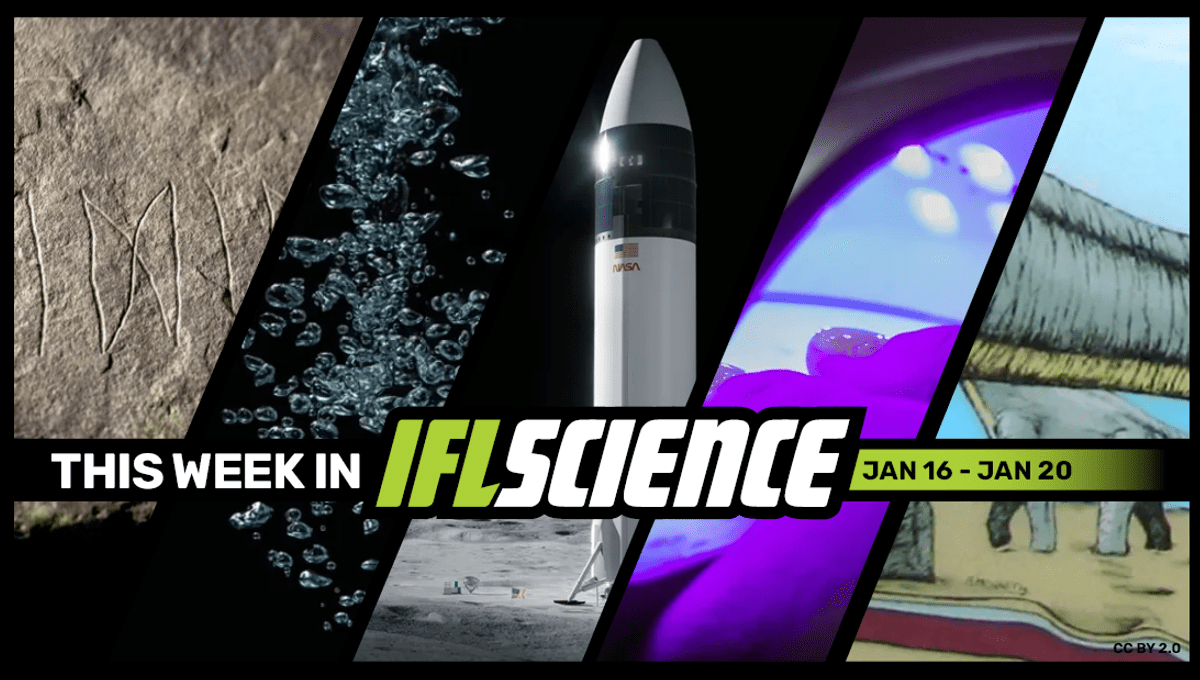
This week, the world’s oldest runestone is found to potentially hold the key to the early development of runic writing, NASA announces plans to land humans on the Moon in 2025, and we investigate Romania’s puzzling “living rocks”.
World’s Oldest Runestone Found In Norway May Speak Of A Mysterious Woman
Archaeologists believe they have found the world’s oldest runestone in Norway. With inscriptions dating back 2,000 years, this laptop-sized stone could shine a light on the development and use of runic writing in ancient Scandinavia. Read the full story here
After Five Centuries, Leonardo Da Vinci’s Bubble Mystery Finally Has An Answer
If you’ve ever watched air bubbles rising through water, you may have pondered the same thing as Leonardo Da Vinci: why don’t all of them travel straight to the surface? If so, you were more than 500 years too late, and probably insufficiently famous, for people to take much notice of your question, but the good news is you’re alive to get an answer. Read the full story here
Humans Will Walk On The Moon In 2025, NASA Announces
NASA has announced its plans for the Artemis III mission, including that it is scheduled for 2025. If everything goes well it will see the return of humans to the surface of the Moon for the first time in over 50 years. The location of the planned Moon landing is somewhere that humans have never explored before: the lunar South Pole. Read the full story here
UV Nail Polish Dryers May Damage The DNA In Our Hands
Ultraviolet (UV) nail polish dryers are a common fixture of beauty salons – but despite their widespread use and the fact that some spectrums of UV rays are known to be carcinogenic, there has never been formal research into the effect of the radiation they emit on mammalian cells. Now, new research suggests they could be damaging the DNA in our hands. Read the full story here
Over 250 Fossilized Dinosaur Eggs Found In India, Including Rare Egg-In-Egg
A treasure trove of fossilized titanosaur eggs discovered in India also includes a curious specimen among the clutch: an egg-in-egg, or ovum-in-ovo, where an egg is found to contain another egg. The quirk of ovulation has only previously been reported in birds, not reptiles, and so it may be that these dinosaurs had a similar laying pattern to their feathered descendants. Read the full story here
Feature of the week:
The “Living Rocks” Of Romania Appear To Grow, Move, and Spawn Others
The tiny Romanian town of Costești is home to a bunch of rocks like none other. Known as “living rocks”, these bulging boulders slowly ooze their innards and can even appear to grow and move. Read the full story here
Source Link: TWIS: Mysterious Runestone Found Holding Cryptic Secrets, New Research Finds Dangers Of UV Nail Polish Dryers, And Much More This Week